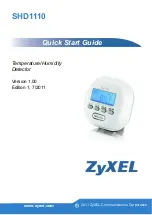
Setup
©
2017 Sensata Technologies
Page 27
**IMPORTANT**
1. To use the
AC In Control
features (
AC In – Time
,
AC In – Volts DC
, and
AC In – SOC
),
the AC source must always be connected and available for use at the inverter’s AC
input—such as utility power. There is no bene
fi
t from using the
AC In
feature if using a
generator, because the generator power may not be available when the
AC In
feature
becomes activated.
2. When an
AC In
feature (
AC In – Time
,
AC In – Volts DC
, or
AC In – SOC
) is selected,
that feature is active whether or not there is any AC power on the inverter’s input.
If no AC power is available, the inverter continues in Inverter mode. However, if AC
power becomes available on the inverter’s input after the connect setting (
Time
,
VDC
,
or
SOC
) has been reached, the inverter continues to allow the incoming AC power to
be connected and used until the disconnect setting is reached.
3. When using a dual source inverter/charger such as the MSH4024RE, the
AC In
features
only work with the GRID IN (AC1) input.
Where should I set the LBCO setting?
If your goal is to not discharge your batteries more
than 20%
*
, then set the
LBCO
from 11.5 to 12.2 VDC (12-volt models), 23.0 to 24.4 VDC (24-
volt models), or 46.0 to 48.8 (48-volt models). In some applications, such as those installed in
an off-grid home or when doing a lot of RV dry-camping, you may want to cycle down to 50%
*
by setting the LBCO from 10.0-11.4 VDC (12-volt models), 20.0-22.8 VDC (24-volt models) or
40.0-45.6 VDC (48-volt models). In extreme circumstances, you have the ability to discharge the
batteries to 80%
*
by setting the LBCO to 9.0-9.5 VDC (12-volt models), 18.0-19.0 VDC (24-volt
models), or 36.0-38.0 VDC (48-volt models) before recharging.
*
These are rough estimates. For accurate battery monitoring, use the ME-BMK battery monitor.
Info:
The higher the LBCO setting, the less the inverter discharges the batteries; which
allows the batteries to have a longer life. The down side to a higher LBCO setting is that
you need to charge more often to prevent the inverter from shutting off in Fault mode.
• 02C AC In – Time:
This feature allows you to connect to the local power utility at a
predetermined time of day. When the current time falls within the set times, the inverter/
charger connects to the AC that is connected to the AC input terminals. Once outside the set
times, the inverter/charger disconnects from the AC source.
◊
Connect
– Determines what time each day the inverter/charger allows the incoming AC
to connect and transfer the loads from the inverter’s battery power to the utility grid.
Default setting:
6:00AM
Range:
12:00AM-11:45PM (15 minute increments)
◊
Disconnect
– Determines what time each day the inverter/charger disconnects any
connected incoming AC, and resumes powering AC loads from the inverter’s battery power.
Default setting:
6:00PM
Range:
12:00AM-11:45PM (15 minute increments)
What is the AC In – Time feature?
This feature allows the incoming AC to connect to the
inverter/charger and charge the batteries only during the time of day as set in the
02C AC In –
Time
menu item. Even if AC is present on the AC input terminals of the inverter/charger, it can
only connect during those times previously set. The most common use of AC In – Time is when
your local utility company offers peak rate savings (or “time of day billing”). The utility company
offers the peak rate savings with a lower rate per kWH (kilo Watt Hour)—usually available at night
when there is less demand on the local utility grid. The
AC In – Time
feature may save you money
by only connecting to the utility when rates are the least expensive.
Where should I set AC In – Time?
Check with your local utility company or installer and see
if they offer lower rates at particular times of the day. If a lower rate is offered, try setting your
connect/disconnect times to coincide with the utility companies lower rates to save you money.
Summary of Contents for ME-ARTR
Page 1: ...ME ARTR Advanced Router Owner s Manual Version 4 0 ...
Page 181: ...NOTES ...
















































